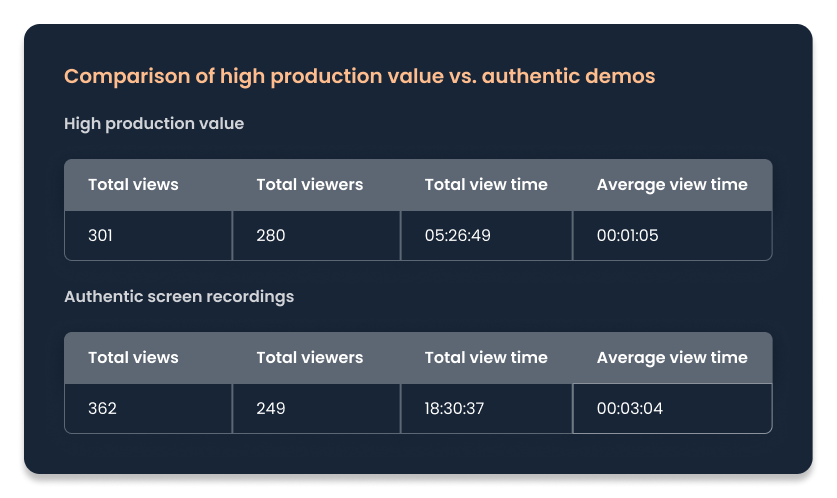Customers will no longer wander through labyrinthine sales cycles built for your convenience, not theirs. Today’s B2B customers want an experience similar to B2C with a swift, informed, and self-paced journey that empowers them to gather the right information, engage stakeholders seamlessly, and make confident decisions.
But here’s the catch: your expertise remains an invaluable compass even with their newfound autonomy. You know the pitfalls hidden in the complex purchase jungle, the resources needed to navigate them, and the triumphant clearing at the end of the path.
Help your buyers understand their destination, anticipate potential roadblocks, and equip them with the tools to conquer each challenge. This proactive approach doesn’t just shorten your sales cycle and build trust – it fosters a rewarding experience that makes your solution the irresistible pick at the journey’s end.
Demo Automation In Action
In the last blog, we talked about the six types of demos, but if you are new to demo creation software, you might not know the best motion for getting those demos out of your content library and to your potential customers.
That’s ok. It’s a simple five-step process to see your automated demos in action.
- Build the content pieces that make the demo. Most automated demos are made up of several mico demos bundled together. This helps customers see only the information they need without any fluff. With Consensus, customers can choose a longer or shorter version of each topic, so consider creating both versions while recording.
- Share a link to a customer portal with champion and/or stakeholders. This is where all the prospect’s personalized content lives. From this link, they can access and share all the content you’ve provided them.
- Have customers identify their role. This allows you to personalize the content each customer sees before they even begin. Reduce the amount of irrelevant content stakeholders have to wade through from the beginning.
- Discover their interests. Based on the content available to each role, your demo should give viewers the ability to select what topics they see in full, partially, and don’t see at all.
- Let the demo do the rest. The demo creation platform should take all the information the customer inputted and synthesize a completely personalized demo. This can include attachments or interactive product tours if the customer wants to see the most info available.
Lower Your Expectations for Production
We know that first step is a doozy. You probably think we’re crazy for putting it all together. Build all the content? That takes careful planning and execution!
While you’re right, it does take time; it doesn’t have to be a theatrical masterpiece to be effective. One of the most intriguing things we found while making software video demos is that people don’t actually like super-polished content!

People found the high-production value videos less engaging than those made more authentically. And this is good news!
Not only does this mean you can make automated demos in a fraction of the time and cost, but your audience will see you as more genuine and credible.
Enabling Rather Than Marketing
Marketing is guilty of pushing for those pretty, high-production value videos. While there is a time and a place for an eye-catching ad, it’s not while trying to enable your buyers.
Just remember what you’re trying to accomplish here. You’re not trying to convince buyers that you have the most state-of-the-art software or are riding every single tech trend that pops up in the zeitgeist.
Buyers don’t buy because the solution is the best out there. They buy because the software solves their problem AND because they feel like they will be taken care of.
And this goes past the initial sale. With the cost of acquiring a new logo, it’s becoming more important for organizations to retain customers and reduce churn than selling to every person who comes along.
Forget Pushy Sales: Guide Through a Rewarding Buyer Journey
Buyer enablement is not going away. If anything, it will become a requirement for any organization that sells to other businesses.
Buyers need help moving through the sales process, and you’re in a uniquely great situation to help. With your in-depth knowledge of how your solution solves issues and what the buying journey looks like, you can make yourself indispensable to your customers.
Want more on buyer enablement? We literally wrote the book on it! Or check out our extensive resource center, view a webinar, or even watch your own demo on demand.
